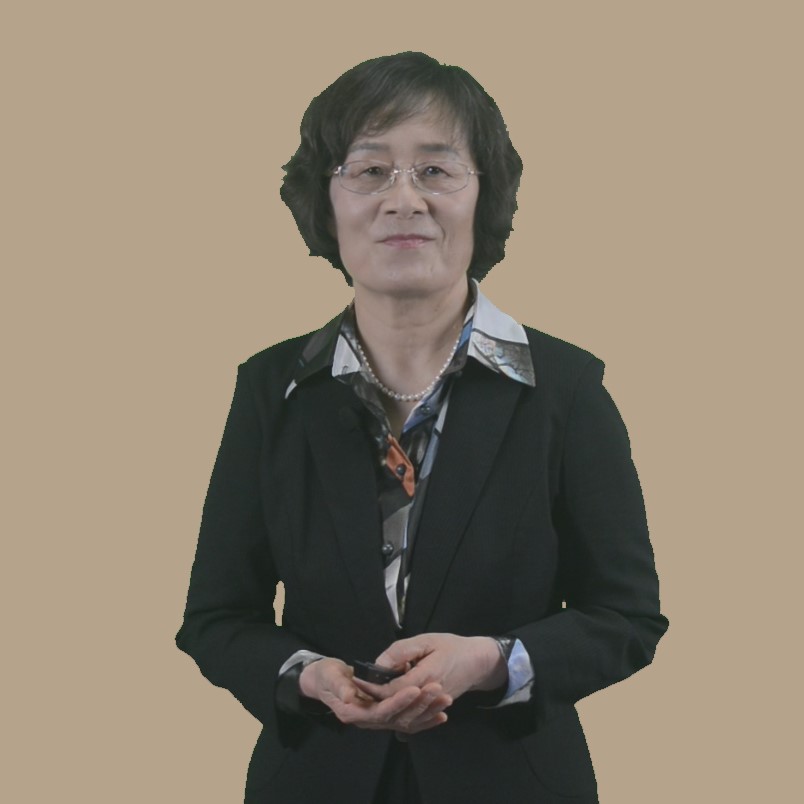
国际商务(英语授课)课程:前往报名学习
本课程是通识课程中的经济类课程,教学的各个环节使用英语。通过学习,学生将学到国际商务知识,开拓国际视野,同时提高英语水平,为学生参与全球化竞争打下基础。
开设学校:大连民族大学;学科:管理学、
本课程是通识课程中的经济类课程,教学的各个环节使用英语。通过学习,学生将学到国际商务知识,开拓国际视野,同时提高英语水平,为学生参与全球化竞争打下基础。
-1.1 What is Globalization 什么是全球化?
--1.1 What is Globalization 什么是全球化?
-1.2 Glibalization of Markets 市场全球化
--1.2.2 Consumers and products 消费者和产品
-1.3 Globalization of Production 生产全球化
--1.3 Globalization of production 生产全球化
-1.4 Drivers of Globalization 全球化的驱动者
--1.4.1 Declining barriers 降低壁垒
--1.4.2 Technological change 技术变革
-1.5 The Changing Demographics of the Global Economy 全球经济变化中的统计数据
--1.5.1 Output and trade 生产总值和贸易
--1.5.3 Multinational enterprises 跨国企业
-1.6 The globalization debate 对全球化的争议
--1.6.2 labor policies and the environment 劳工政策和环境
--1.6.3 national sovereignty 国家主权
--1.6.4 the world’s poor 世界贫困人口
--Chapter 1 Globalization definitions
-第一章 Globalization 全球化--章末测试
-Chapter 1: Discussion 1.1 easy to compete?
-Chapter 1: Discussion 1.2 Technology and globalization
-Business Focus 商务聚焦
--A glance at the global economy under COVID-19 pandemic 新冠疫情下的全球经济略览
-2.1 Political system 政治体制
--2.1.1 What is a political system? 什么是政治体制?
--2.1.2 Collectivism and individualism 集体主义和个人主义
--2.1.3 Democracy and totalitarianism 民主与专制
-2.2 Economic System 经济体制
-2.3 Legal System 法律体制
--2.3.1 What is a legal system? 什么是法律体系
--2.3.3 Protection of intellectual property 保护知识产权
-2.4 The Determinants of Economic Development 经济发展的决定因素
--2.4.1 Differences in economic development 经济发展差异
--2.4.2 Political economy and economic progress 政治经济与经济发展
--Chapter 2 Differences in PE definitions
--Chapter 2 PPT Differences in PE
-章末测试--作业
-Chapter 2: Discussion 2.1 Why invest in China?
-Chapter 2: Discussion 2.2 The engine of economic growth
-3.1 What is Culture? 什么是文化?
--3.1.1 Why learn about culture? 为什么要学习文化
--3.1.2 Culture: Value 文化: 价值观
-3.2 Social Structure 社会结构
--3.2.1 Individuals and groups 个人和集体
--3.2.2 social stratification 社会分层
--3.2.3 social stratification:Li Zhao’s story 社会分层: 李钊的故事
-3.3 Language and Education 语言与教育
--3.3.2 Unspoken language 非口头语言
-3.4 Culture and the Workplace 文化与工作场所
--3.4.1 Culture expert: Geert Hofstede 文化专家:吉尔特·霍夫斯塔德
--3.4.2 Four dimensions: 1-2 四个维度:1-2
--3.4.3 Four dimensions: 3-4 四个维度:3-4
--Chapter 3 Culture Difference definitions
--Chapter 3 PPT Differences in Culture
-章末测试--作业
-Chapter 3: Dicussion 3.1 Culture and business
-Chapter 3: Discussion 3.2 An example of culture difference
-4.1 Mercantilism 重商主义
--4.1.1 An overview of trade theory 贸易理论综述
-4.2 Absolute Advantage 绝对优势
--4.2.1 Challenging the mercantilist philosophy 挑战重商主义
-4.3 Comparative Advantage 比较优势
--4.3.1 A positive sum gain 正和博弈
--4.3.3 Qualifications and assumptions 理论假定
-4.4 Heckscher-Ohlin Theory 赫克歇尔-俄林理论
--4.4.1 Factor endowments 要素禀赋
--4.4.2 the Leontief Paradox 里昂惕夫之谜
-4.5 The Product Life Cycle Theory 产品生命周期理论
--4.5.1 Product life cycle 产品生命周期
--4.5.3 Evaluating the product life cycle theory评价产品生命周期理论
-4.6 New Trade Theory 新贸易理论
--4.6.1 Economies of scale and first mover advantages规模经济和第一进入者优势
--4.6.2 Implications of new trade theory 新贸易理论应用
-4.7 National Competitive Advantage 国家竞争优势
--4.7.1 Porter's Diamond 波特的钻石模型
--4.7.2 Evaluating Porter's theory 评价波特的理论
--4.7.3 Implications for managers 对经理人的启示
--Chapter 4 Trade theory definitions
-章末测试--作业
-Chapter 4: Discussion 4.1 Why engage in international trade?
-Chapter 4: Discussion 4.2 Porter’s diamond
-Business focus 商务聚焦
--China-Zealand trade ties on the up thanks to FTA boost 自贸协定推动中国-新西兰经贸关系进一步发展
-5.1 Introduction 总体介绍
-5.2 Instrument of Trade Policy 1 贸易政策工具1
-5.3 Instrument of Trade Policy 2 贸易政策工具2
--5.3.2 voluntary export restraint 自愿出口限制
--5.3.3 antidumping duties 反倾销税
-5.4 Instrument of Trade Policy 3 贸易政策工具3
--5.4.1 local content requirements 国产化规定
--5.4.2 administrative policies 行政管理政策
-5.5 Political Arguments for Government Intervention 政府干预的政治理由
--5.5.1 protecting jobs and industries 保护就业和产业
--5.5.2 national security 国家安全
--5.5.4 protecting consumers 保护消费者
--5.5.5 furthering foreign policy objectives 推动对外政策目标
--5.5.6 protecting human rights 保护人权
-5.6 Economic Arguments for Government Intervention 政府干预的经济理由
--5.6.1 infant industry argument 幼稚产业论
--5.6.2 strategic trade policy 战略性贸易政策
-5.7 Managerial Implication 管理者启示
--5.7 Managerial Implication 管理者启示
--Chapter 5 Political Economy in IT definitions
--Chapter 5 PPT Political Economy of IT
-章末测试--作业
-Chaper 5: Discussion 5.1 Government intervention
-Chapter 5: Discussion 5.2 Trade barriers
-Business focus 商务聚焦
--China imposes anti-dumping duties on imports of wine from Australia 中国对从澳大利亚进口的葡萄酒征收反倾销税
-6.1 Introduction 引言
-6.2 FDI in the World Economy 世界经济中的外国直接投资
--6.2.1 Trends in FDI 外国直接投资的趋势
--6.2.2 The Direction of FDI 外国直接投资的流向
-6.3 Theories of Foreign Direct Investment 外国直接投资理论
--The Pattern of FDI 外国直接投资的模式
-6.4 Benefits and Costs of FDI 外国直接投资所带来的收益和成本
-- Host-Country Benefits 东道国收益
-6.5 Government Policy Instruments and FDI 政府政策工具与外国直接投资
-6.6 Implications for Managers 对企业经营者的启示
-- The Theory and Government Policy 投资理论和政府政策
-章末测试--作业
-Chapter 6: Dicussion 6.1 FDI for host
-Chapter 6: Dicussion 6.2 FDI for home
-7.1 Introduction介绍
-7.2 Value Creation价值创造
-7.3 Strategy and Strategic Positioning战略和战略定位
--7.3 Strategy and Strategic Positioning 战略与定位
-7.4 Operations运作
-7.5 Organization and Strategic Fit组织和战略匹配
--7.5 Organization and Strategic Fit 组织与战略匹配
-7.6 Pressures and International Strategy 压力与国际战略
--7.6 Pressures and International Strategy 压力与国际化战略
--Chapter 7 Business Strategy definitions
--Chapter 7 PPT Business Strategy
-章末测试--作业
-Chapter 7: Discussion 7.1 Primary strategies
-Chapter 7: Discussion 7.2 Four strategies
-8.1 The Functions of Foreign Exchange Market 外汇市场的功能
--8.1 The Functions of the Foreign Exchange Market 外汇市场的功能
-8.2 Prices and exchange rates 价格和汇率
--8.2 Price and Exchange Rates 价格和汇率
-8.3 Exchange rate determination 汇率决定因素
--8.3 Exchange rate determination 汇率决定因素
-8.4 Exchange rate forecasting 汇率预测
--8.4 Exchange rate forecasting 汇率预测
--Chapter 8 FX Market definitions
--Chapter 8 PPT Foreign Exchange Market
-章末测试--作业
-Chapter 8: Discussion 8.1 Hedge and forward
-Chapter 8: Discussion 8.2 Inflation
-9.1 Introduction of accounting? 会计简介
--9.1.1 What is accounting? 什么是会计
--9.1.3 The Statement of Retained Earnings 留存收益表
--9.1.5 Statement of Cash Flows 现金流量表
--9.1.6 The relationships among statements 报表间关系
--9.1.7 Functions of financial statements 财务报表的作用
-9.2 Accounting Standards会计准则
--9.2.1 National Standards国家准则
--9.2.2 International Standards国际准则
-9.3 Accounting systems and multinational enterprises 会计体系与跨国企业
--9.3.1 Accounting and control systems会计和控制体系
--9.3.2 Subsidiary performance evaluation子公司业绩评价
-9.4 Financial Management 财务管理
--9.4.1 Investment decisions 投资决策
--9.4.2 Financing decisions 筹资决策
--Chapter 9 Accounting & Finance definitions
-章末测试--作业
-The blockage of the Suez Canal has disrupted global trade 苏伊士运河堵塞影响全球贸易
-Hainan FTP: greater opening-up, greater achievement 海南自贸港: 更大的开放,更多的成就
-China's Q1 foreign trade hits highs 中国一季度外贸创历史新高
-Global pharma giants step up alliances in Chinese market 全球制药巨头在中国市场加强联盟
-Digital RMB pilot programs expand 数字人民币试点再扩容
-A shares continue to attract foreign interest A股继续吸引外资关注
-Boao Forum for Asia Annual Conference 2021 博鳌亚洲论坛2021年年会
-China’s backlash against the western boycott of Xinjiang Cotton 中国对西方抵制新疆棉花的回击
谭会萍,大连民族大学教授。“国际商务”国家级双语示范课程主讲教师和负责人,国家级来华留学英语授课品牌课程主讲教师和负责人,辽宁省教学名师。曾获辽宁省普通高等教育本科教学成果一等奖。曾赴英国、美国、加拿大、澳大利亚、新西兰、丹麦的多所大学访学。曾获英国和新西兰的英语教师证书。主要研究方向为国际经贸及多边贸易体制。
刘岩,经济学博士,大连民族大学副教授。讲授“国际商务(英语)”课程。美国德州农工大学访问学者,澳大利亚悉尼科技大学客座研究员。曾主持国家社会科学基金项目。曾在World Economy, China and World Economy,《国际贸易问题》等期刊上发表学术论文。主要研究方向为国际贸易政策。
张欣,经济学博士,大连民族大学副教授。讲授“国际商务(英语)”、“国际物流与运输管理(英语)”和“国际商务英语口语”课程。主持国家社会科学基金项目和多项省部级科研项目。曾赴英国、新西兰、丹麦和韩国大学学习和讲学。主要研究方向为国际商务。
朱瑞雪,经济学博士,大连民族大学副教授。讲授“世界经济(英语)”和“商务英语口语”等课程。曾多次获辽宁省和学校教育教学奖励。参与多项辽宁省教育科学规划项目和主持校教学改革与教学研究项目。曾赴美国和新西兰参加专业及英语培训。主要研究方向为国际经贸及民族地区开放型经济发展。
蔡莉,经济学硕士,大连民族大学讲师。主讲“国际经济学(英语)”、“世界贸易组织(英语)”等课程。曾赴英国、加拿大、澳大利亚访学。获得剑桥大学ESOL考试系统“教学知识测试(TKT)”教师教学能力测试证书。主要研究方向为国际经贸及民族地区经贸。
王玮卓,金融学博士,大连民族大学讲师。主讲“国际金融(英语)”、“国际财务管理(英语)”以及商务英语相关课程。具有多年的留学经历。主要研究方向为信贷风险管理及房地产金融。
张惠茹,管理学硕士,大连民族大学副教授。讲授“管理会计(英语)”“国际会计(英语)”、ACCA课程。曾赴美国、英国、丹麦、斯洛文尼亚的大学讲学。多次获校优秀教师等称号。研究方向为管理会计及会计国际比较。